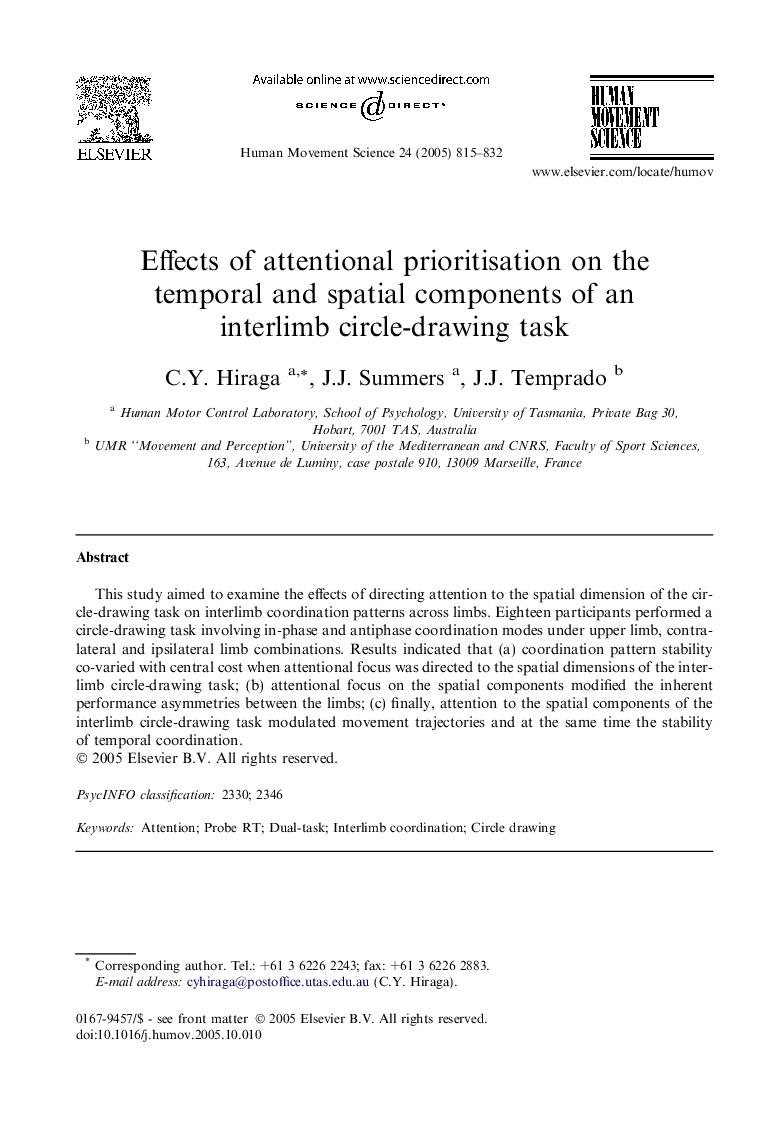| Article ID | Journal | Published Year | Pages | File Type |
|---|---|---|---|---|
| 9722460 | Human Movement Science | 2005 | 18 Pages |
Abstract
This study aimed to examine the effects of directing attention to the spatial dimension of the circle-drawing task on interlimb coordination patterns across limbs. Eighteen participants performed a circle-drawing task involving in-phase and antiphase coordination modes under upper limb, contralateral and ipsilateral limb combinations. Results indicated that (a) coordination pattern stability co-varied with central cost when attentional focus was directed to the spatial dimensions of the interlimb circle-drawing task; (b) attentional focus on the spatial components modified the inherent performance asymmetries between the limbs; (c) finally, attention to the spatial components of the interlimb circle-drawing task modulated movement trajectories and at the same time the stability of temporal coordination.
Related Topics
Life Sciences
Neuroscience
Cognitive Neuroscience
Authors
C.Y. Hiraga, J.J. Summers, J.J. Temprado,
